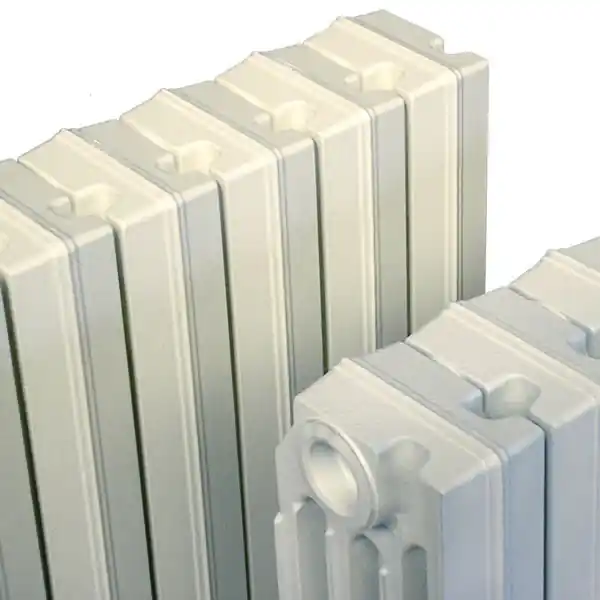Cast Iron Radiator: Efficiency Tips
The cast iron radiator, or cast iron heater, has excellent thermal inertia properties and is well-suited for use with condensing boilers. It requires low operating temperatures, allowing the condensing boiler to modulate significantly, entering the condensation range.
Aesthetic standards might suggest replacing this type of radiator, but they adapt well to new heat production technologies.
Another advantage is the low air production in the system, which reduces the load on the boiler’s air vent valve.
Do I need to bleed cast iron radiators?
Normally, no, they don’t produce much air. However, if you hear gurgling sounds from a particular radiator, use the bleed valve located at the top of the radiator; there might be air in it.
The radiator is hot at the top and cold at the bottom!
This is normal, provided the valves are open. It may mean the room is cold and the cast iron radiator dissipates most of the heat into the room. Having the radiator hot at the top and cold at the bottom typically indicates good performance. Conversely, if it were hot both at the top and bottom, it means the room is already warm, or the boiler is set too low for the season.
How to increase the efficiency of a cast iron radiator?
Remove clothes, blankets, or hats from the radiator, as these block the normal airflow within the radiator. Cold air flows through the radiator’s slots from bottom to top, absorbing heat. Use a brush or a sausage brush to clean the dust accumulated in the slots.
Temperatures for cast iron radiators
In autumn, when starting the heating system, adjust the boiler. Set an appropriate temperature based on the external temperature. This means that if the outside temperature averages 15 degrees, the boiler temperature can be set to only 40-45°C.
Check the boiler temperature as it may still be set to last winter’s full setting.
If the boiler temperature is too high for the season, with cast iron radiators, you will see the effect of thermal inertia. Setting the thermostat to 18°C, the indoor temperature will exceed and reach up to 21 degrees.
On the other hand, if the boiler temperature is too low, you will notice the radiators are always warm, and the room never reaches the desired temperature.
Setting the correct temperature for the season is important to avoid waste; we suggest starting at 40°C in the boiler and increasing by 5 degrees at a time according to the external temperature.
One radiator in the house is cold, what can I do?
There can be several reasons:
- There is too much air, and the hot heating water does not flow into the radiator: Try bleeding the radiator.
- The cast iron radiator was closed in the past: many valves do not work well after being closed for a long time, the shutter may have stuck to the seat. This usually happens where there are thermostatic valves that close the radiator for several months during the summer due to high ambient temperatures. Try removing the thermostatic head and gently pulling the shutter stem with pliers.
- There may be air in the manifold: You should have a box at home with all the radiator connections; at the top of this manifold, there may be automatic or manual vents, if they are manual, try bleeding at this position.

